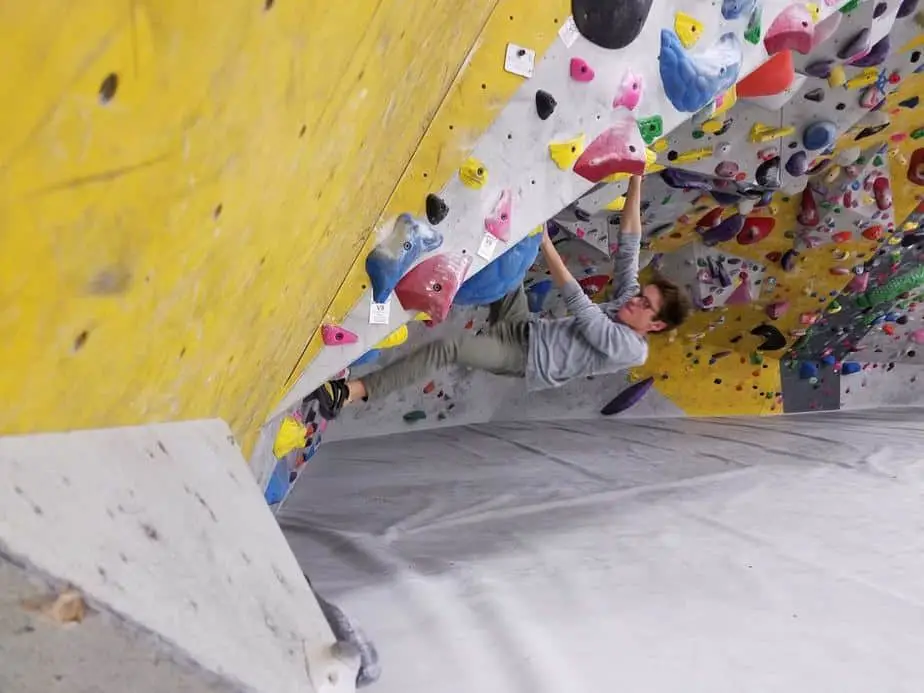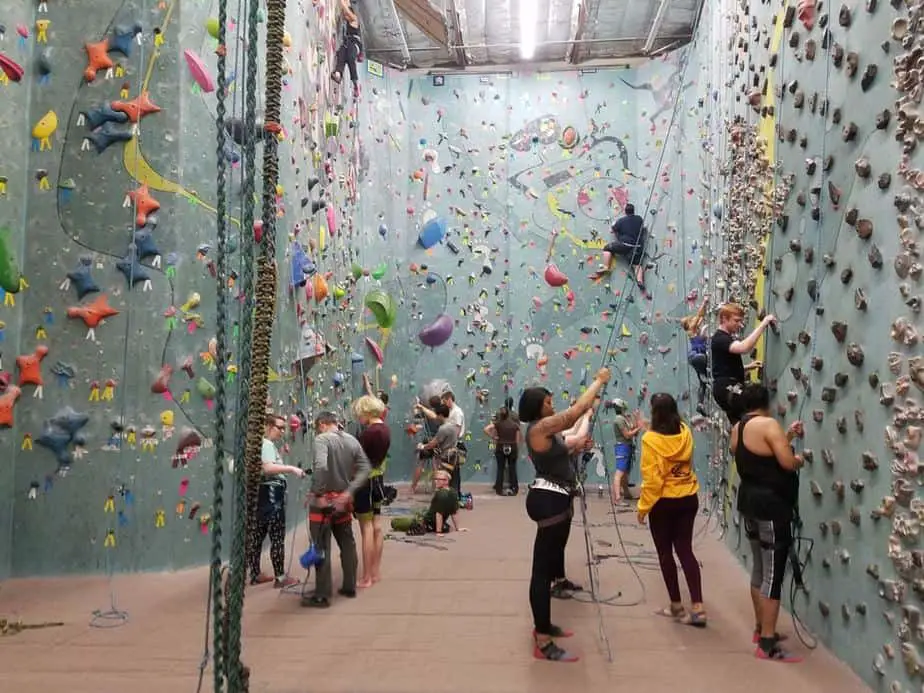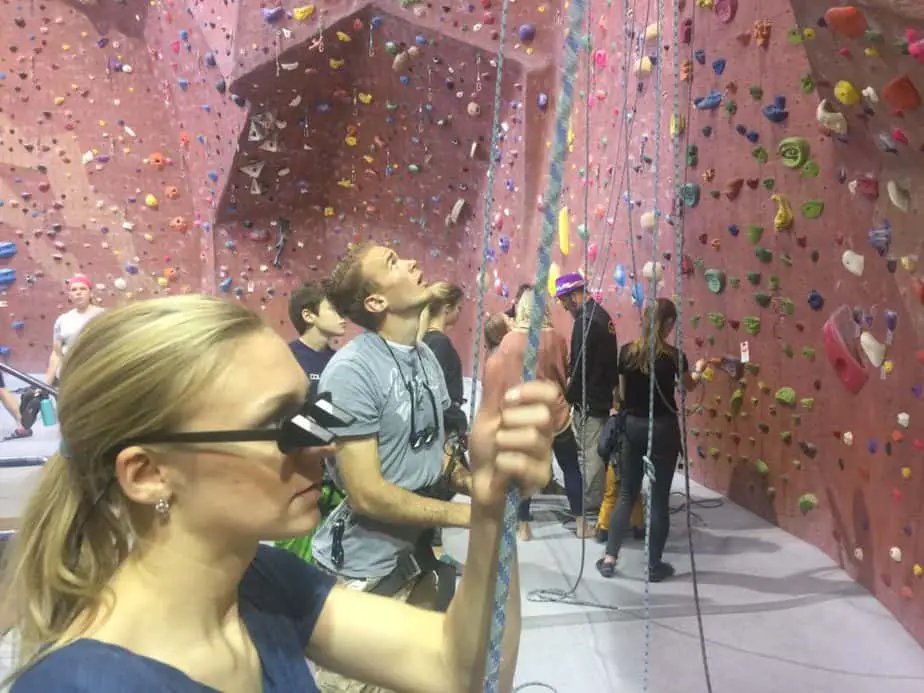Since climbing outdoors requires a modest investment in basic climbing gear, and can be intimidating for someone new to the sport, climbing gyms have today become the starting point for most folks’ initial forays into the climbing world. Unfortunately, the cost of membership to most gyms, let alone a simple day pass, is still something that may limit people’s ability to be more involved in the sport.
Indoor Climbing gyms are extremely expensive to start and operate, so these costs are passed on to climbers. The major fees include leasing a property, remodeling, buying materials and equipment, insurance, staffing, and utilities. Day passes are more expensive to encourage membership in the gym, and supply and demand influence what the market will pay.
Our aim here is to both explain why gyms’ rates are seemingly so expensive, inspiring understanding and empathy towards these establishments, while also calling for equal opportunity for folks who may not be able to afford experiencing this sport that can be life-changing in innumerable ways.

Climbing Gym Expenses
There’s no simple answer to this, but a variety of factors come into play. Firstly, comparing climbing gyms with regular private gyms, whose memberships can range from $20 to over $100 a month, shows that climbing gyms’ price points actually may be relatively competitive.
With the fact that climbing, an inherently risky sport if not executed with proper instruction, can be dangerous, one realizes that a climbing gym assumes a certain level of liability for any of their customers, despite the waivers that one typically will sign before entering the facility.
There is also an extremely high demand for this increasingly popular activity, and proportionately not nearly as many climbing gyms in business as regular gyms, which will drive the price up in these establishments that can only accommodate a certain amount of climbers at a time.
Finally, most climbing gyms also feature full weight rooms and showers, as well as additional services like yoga, workout, and technical classes and clinics, meaning that a membership goes much further than simply getting one on a wall.
Commercial Real Estate
The biggest up front and biggest ongoing expense is paying for the building to house your climbing gym. As opposed to a regular exercise gym or other similar area, a climbing gym requires at least 2 floors’ worth of space and a huge building to house it in. Obviously, the size of the gym will depend on the size of the climbing community.
Climbing gyms can only exist in fairly heavily populated areas because climbing is such a niche activity. In order to have enough participants and members to make it financially viable, the gym needs to be located near a good-sized population center of at least several hundred thousand.
Real estate in these larger population centers is much more expensive than in rural areas because it is more scarce and there’s more competition for it.
After leasing an enormous warehouse space comes the challenge of remodeling it to match the desired vibe. Most old warehouses within a climbing gym’s budget require lots of updates to house people instead of inventory. These updates and remodeling expenses add up quickly.
Aside from the costs to renovate and maintain a warehouse space, gyms also have to pay pretty high utility bills to keep it warm or cool enough depending on the season. During the summer months cooling can get really expensive because of how tall the space is. Depending on the area, utilities could cost more than $1000 per month.

One of my favorite gyms is Upper Limits in Bloomington/Normal Illinois, which is housed in some old cement grain silos. They found that they could install holds in the cement silos (pretty much the tallest building in rural Illinois) and could get the property for cheap.
The college town and nearby surrounding towns had enough people to keep it afloat, and they’ve since expanded a little bit down into St. Louis. The only problem is that the silos get extremely hot in the summer!
Insurance Coverage
Climbing is obviously a sport that can have some consequences if not carried out in a responsible and safe manner. Even a bouldering fall, carried out properly, near the top of the problem, can result in at least a broken ankle despite the heavy foam pads below. While waivers do cover a lot of the liability, there are always risks involved in climbing and litigation is expensive to fight.
Similarly, a lead climbing fall, even if carried out properly, can still result in minor injury from slamming into the wall or even hitting the ground. Climbing gyms encourage proper learning and education, require certification to lead climb, as well as the waivers that everyone must complete before participating.
However, as much as they may cover their bases, the reality is that accidents can still happen, and consequent legal action may ensue.
Climbing gyms, for the most part, must subscribe to robust insurance policies, which undoubtedly plays into their pricing model. They require General Liability Insurance, worker’s comp insurance, as well as insurance to cover the space that they operate in.
Materials and Equipment
Climbing walls are usually custom-built for the space they occupy, which means paying custom prices. Walls, pads, and bulk holds are very expensive.
If you’ve ever tried to build out your own home climbing wall, you realize how fast the costs add up. Additionally, plan on $100+ for every rope, bolts, route setting equipment, pads, and the commercial equipment in the registration area.
Lots of the gear and equipment wear out and need to be replaced as well, including ropes, holds, and pads. Gyms need to put together a big collection of rental gear in every size that can wear out quickly with inexperienced climbers.
See Also: How Much Does A DIY Climbing Wall Cost?
Staffing Costs
To ensure that climbers can enjoy the sport safely, climbing gyms must always have a considerable army of employees on hand. Employees are responsible for handling the front desk and the accompanying registration and forms, as well as taking care of rentals and other maintenance issues.
They must also be on hand to offer basic top rope and lead climbing instruction, as well as to administer belay tests at any time of day.
Routes are also re-set with regularity, and a whole team of route-setters can often be found working hard throughout the gym, dialing in the moves at appropriate difficulty for the route.
In order to prevent accidents, most gyms have several employees roam throughout the gym during the day to try and spot mistakes like incorrect knots or belay technique. These employees are generally climbers themselves, which limits the pool of applicants for the roles and drives up their wages a little bit.
Other Services
As stated above, climbing gyms offer a wide variety of services that go above and beyond what a regular gym has to offer. Climbing gyms often offer free yoga and even meditation classes, as well as workout instruction, and the usual showers and locker rooms that one would expect to find in any gym. Some gyms are even integrated with Ninja Warrior Training Courses.
Climbing gyms offer lessons and clinics, from basic belay techniques to lead climbing and even crack climbing. These aren’t always included with a pass or membership, but oftentimes are.
The fact that some gyms are able to offer such a wide variety of services at a price point that is relatively competitive with a regular gym is actually quite shocking!
Compared to regular gyms, climbing gyms require much more maintenance and cleaning. The routes are regularly re-set as mentioned above, and gyms use this opportunity to deep-clean all the holds to rid them of residual chalk, grease, dirt, and germs. Especially now in the age of coronavirus, climbing gyms are taking much more precautionary measures to ensure the health of their members.
Supply and Demand
The basic rules of economics still apply to climbing gyms. As compared with regular gyms, there is a scarcity of climbing gyms across the country, and in certain areas, especially those with meager outdoor climbing opportunities, folks will drive considerable distances to climb in a gym.
We have all been to overcrowded gyms; to think of what gyms would look like crowd-wise if entry were to be significantly cheaper is also daunting.
At the end of the day, there is considerable demand for climbing gyms and limited spaces, and basic economic principles will inevitably allow climbing gyms to increase their price points. When prices rise high enough, someone will probably open up a competing gym and prices will come down again.
I would predict that we will see chains of climbing gyms develop around the country over the next decade, as is happening with Earth Treks and other groups. It will likely drive down prices because of the standardization involved in owning several gyms, but will reduce the individuality of each area.

Gyms are a Gateway to the Climbing Life
As stated above, climbing gyms are most folks’ starting point into the intimidating world of verticality. Since climbing gyms offer basic top roping instruction, as well as easy access to low-risk bouldering and more advanced techniques such as lead climbing, they are a perfect environment for building one’s skills and self-sufficiency before heading outside.
Many climbers also work full-time, and thus climbing gyms being open after dark, regardless of the weather outside, allow one to climb much more frequently and regularly than outdoors. Climbing gyms are also a great way to meet fellow climbers or even mentors.
Going to the gym with friends can also be a great social scene where people can push each other physically and mentally in friendly competition and support while hanging out in a low-risk, low-consequence, low-commitment environment. In this vein, gyms are much safer than climbing outside (See: Is Indoor Rock Climbing Dangerous?).
Gyms host a wide array of top ropes and boulders with thick crash pads below that allow anyone to push themselves on the whole spectrum of difficulty level. Even lead climbing in a gym is relatively safe, as the bolts are usually much closer together than outdoors, and one can easily cheat and use holds from another route if in difficulty.
Finally, gyms require little upfront investment especially compared to climbing outside, and offer affordable gear rentals for those simply hoping to try it out.
Climbing Indoors Doesn’t Have to Be Expensive
Although climbing gyms’ rates vary by area, and do offer much more complete offerings than regular gyms, they are undoubtedly more expensive than getting a membership at a non-climbing gym.
As discussed above, there are many reasons for this, all of which are pretty understandable and reasonable. Here are some tips to make climbing indoors less expensive.
Gym Membership: If you go to a gym more than 2 or 3 times per month you will probably save money with a gym membership. Gyms charge really high prices for day passes in order to encourage membership for a variety of reasons.
This makes it easy for them to forecast expenses and revenues, but also reduces their liability as novices are usually more likely to get hurt. It also reduces administrative expenses, since they don’t have to register and pay each time.
Deals: Most gyms offer different packages like punch cards and birthday packages. Check sites like Groupon for 2-for-1 deals designed to get people hooked on climbing.
Gear: While renting gear definitely makes sense for your first time or two, the $5-$10 it costs for shoes and a harness add up really quickly. If you buy some entry level gear it will pay for itself quickly.
Combine Expenses: Do you really need an exercise gym pass and a climbing gym pass? Would you rather go to the movies every weekend or go climbing?
There are lots of trade-offs that can help make your climbing gym pass pay for itself. Pack a lunch a few days a week instead of eating out, and drink water instead of hitting Starbucks. Soon enough you can buy your own gym!
Related Questions:
Why are Bouldering Gyms So Expensive? Insurance, materials, rent and maintenance, and staffing are all very expensive. Even though a bouldering gym doesn’t require as much equipment or space as a full climbing gym, the costs still add up quickly.
What Wood is Used For Climbing Walls? Professional climbing walls usually use a thick multiplex board with holes in it. Home climbing walls are made out of high-grade plywood that is smooth to the touch but cheaper than solid wood.

